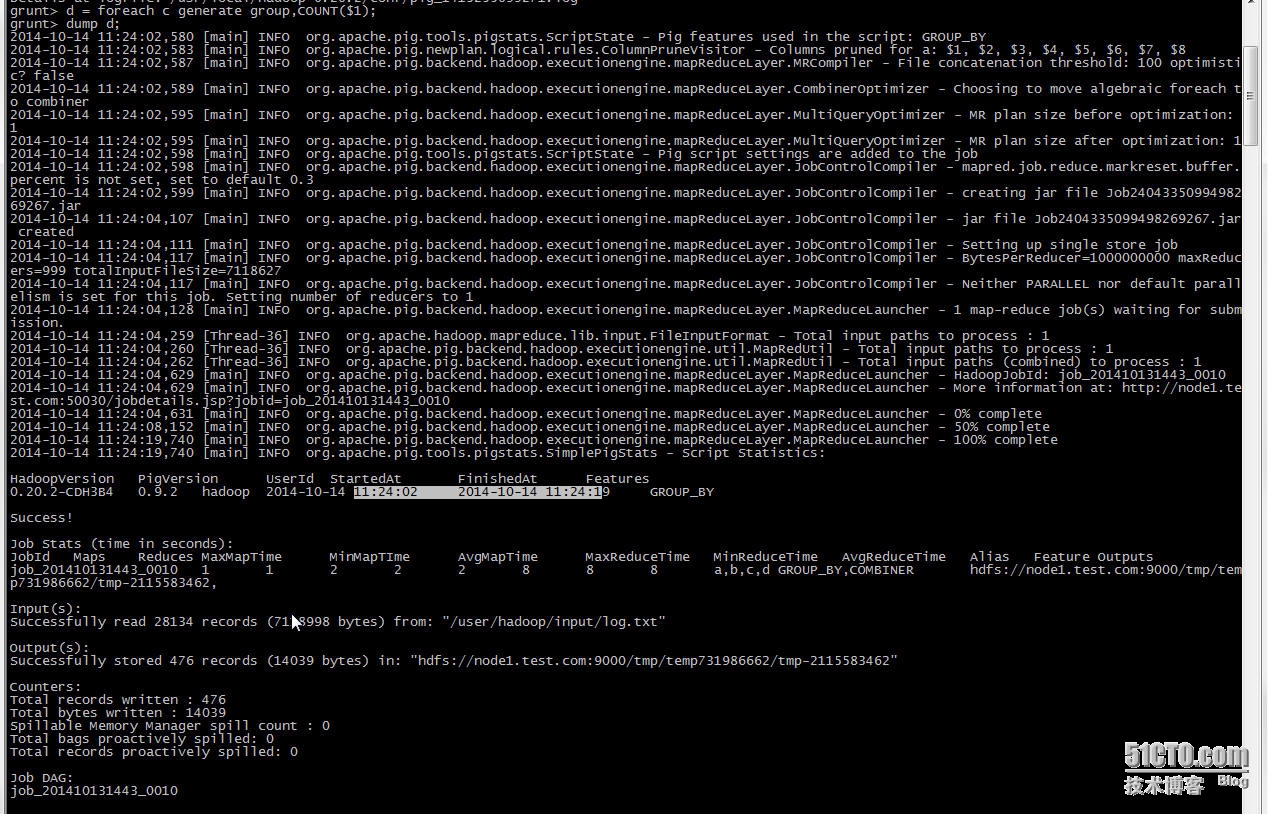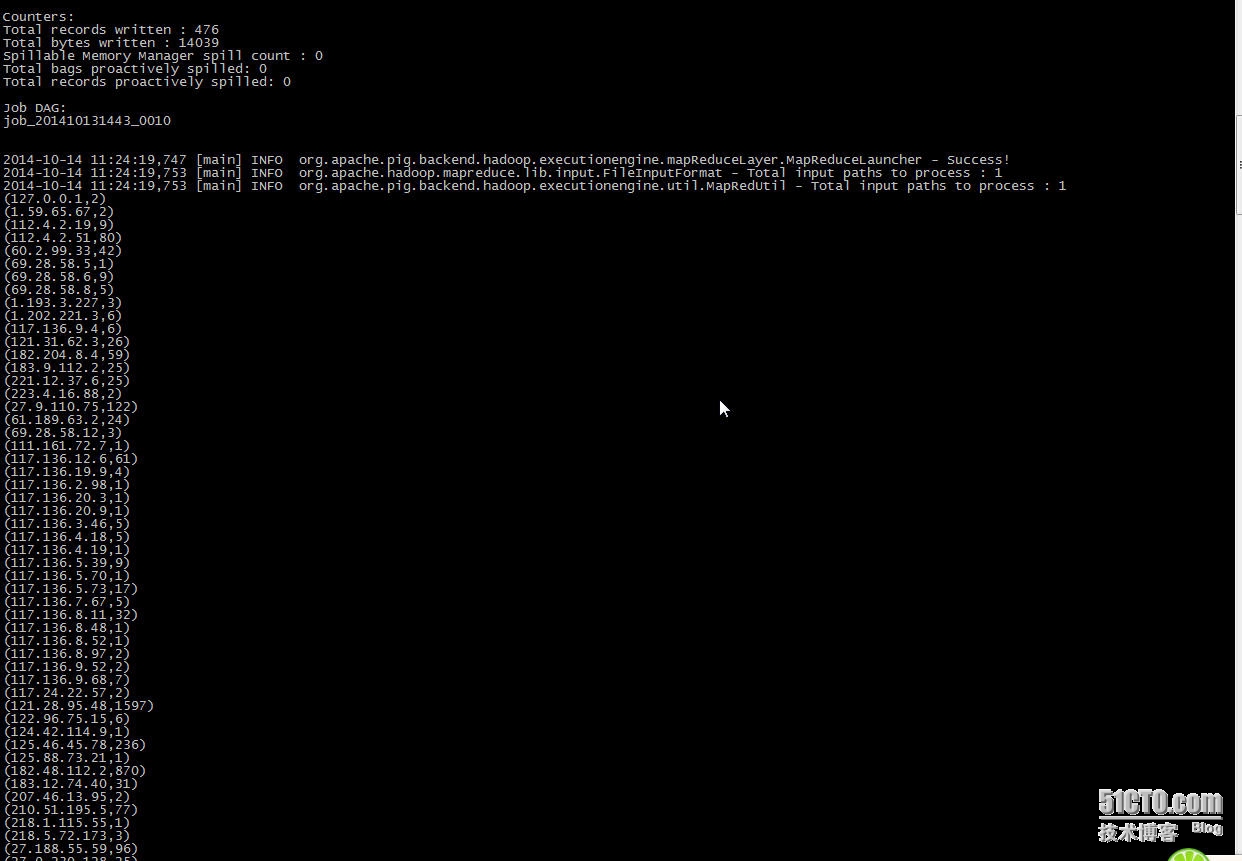首页 > 代码库 > 你用pig分析access_log日志中ip访问次数
你用pig分析access_log日志中ip访问次数
环境说明:
os版本:rhel5.7 64位
hadoop版本:hadoop-0.20.2
hbase版本:hbase-0.90.5
pig版本:pig-0.9.2
访问日志文件,下载文章中的附件!
日志放在本地目录路径为:/home/hadoop/access_log.txt
日志格式为:
220.181.108.151 - - [31/Jan/2012:00:02:32 +0800] "GET /home.php?mod=space&uid=158&do=album&view=me&from=space HTTP/1.1" 200 8784 "-" "Mozilla/5.0 (compatible; Baiduspider/2.0; +http://www.baidu.com/search/spider.html)"
1)在hdfs文件系统中创建input目录
grunt> mkdir input
grunt> ls
hdfs://node1.test.com:9000/user/hadoop/input <dir>
grunt> cd input
grunt> ls
grunt> pwd
hdfs://node1.test.com:9000/user/hadoop/input
2)把本地日志文件系统加载到hdfs系统当前目录的log.txt文件里面;
grunt> copyFromLocal /home/hadoop/access_log.txt log.txt
2014-10-14 10:53:49,667 [Thread-7] INFO org.apache.hadoop.hdfs.DFSClient - Exception in createBlockOutputStream java.net.NoRouteToHostException: No route to host
2014-10-14 10:53:49,667 [Thread-7] INFO org.apache.hadoop.hdfs.DFSClient - Abandoning block blk_-7546596643624545852_1118
2014-10-14 10:53:49,669 [Thread-7] INFO org.apache.hadoop.hdfs.DFSClient - Excluding datanode 172.16.41.154:50010
#查看相关文件
grunt> ls
hdfs://node1.test.com:9000/user/hadoop/input/log.txt<r 2> 7118627
3)加载文件内容到变量a中,分隔符为‘ ’;
grunt> a = load ‘/user/hadoop/input/log.txt‘
>> using PigStorage(‘ ‘)
>> AS (ip,a1,a2,a3,a4,a5,a6,a7,a8);
4)对ip字段过滤
grunt> b = foreach a generate ip;
5)按ip对c进行group by操作:
grunt> c = group b by ip;
6)对ip点击次数进行统计:
grunt> d = foreach c generate group,COUNT($1);
显示计算结果:
grunt> dump d;


本文出自 “shine_forever的博客” 博客,请务必保留此出处http://shineforever.blog.51cto.com/1429204/1563850
你用pig分析access_log日志中ip访问次数
